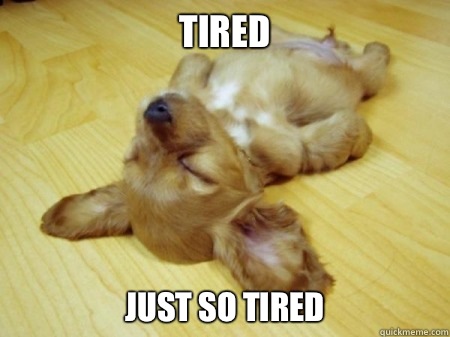What Is HIIT?
HIIT is short for High-Intensity Interval Training. In a nutshell, it's a 20- to 30-minute mix of aerobic and anaerobic training. It can be the best of both worlds: cardio and strength (or cardio and race-specific speed training).
 |
| Have your cake and eat it, too! |
The idea behind HIIT is pretty simple: You go all out for a set, a distance or a pre-determined time, then dial back to catch your breath -- and then ramp it back up again. You'll get your heart rate up into the anaerobic zone, which is where you burn the most calories and make the biggest gains in your cardiovascular system. But by allowing it to return into the aerobic zone -- where you're taking in as much oxygen as you're using -- you're able to go for longer than just a couple minutes. And by staying in the aerobic zone, and not resting too long, you ensure that you're still burning calories and pumping blood.
The Benefits of HIIT
One reason I'm a huge fan of HIIT is that I'm able to work on both my cardio and strength training at the same time. I've worked out a basic bodyweight routine that hits just about every major muscle group: shoulders/arms/chest, abs/obliques, upper/lower back and quads/glutes/calves. And I've found that, at least for me, there's no better way to get my core work done.
HIIT has two basic benefits:
- It saves time, as you get a lot of work done in less than a half-hour.
- It helps you expand your VO2 max -- the maximum amount of oxygen your lungs can deliver to your muscles -- better than other forms of exercise.
So for example, let's say you burn 600 calories in an hour of biking, and I burn 400 in 30 minutes of HIIT. Then you burn 40 EPOC calories and I burn 80. Yes, I did it more efficiently and got more "afterburn," but you've still burned 160 more calories overall. And it's not like I could just go for another 10 or 15 minutes. If you're not exhausted after 30 minutes of HIIT, it's not "HI" enough. You're not getting your heart rate out of the aerobic zone. In other words, you're still more or less doing steady-state cardio.
But fitness isn't all about calories burned. You're also looking to build muscle and increase the amount of work you can do. And for a busy Regular Guy, doing that in notta lotta time is key -- especially when you can do it wherever you are, rather than having to drive to the gym.
So Let's Get Down to It
Next post, I'll get into the specific bodyweight exercises I do during my HIIT workout. But for now, let me leave you with an overview of what I do.
I do all of my exercises more or less to failure -- till I literally can't do anymore until I rest. And as I've said, my rest periods are just long enough to catch my breath so I can do the next set -- ideally, 20 to 30 seconds. (This also gives me a chance to make adjustments like moving my mat around.) In an average HIIT circuit, I'm shooting for 10 to 12 sets. Sometimes I'll repeat exercises, but I have enough in my arsenal that I don't really need to do that.
I don't know if this is a problem, but I don't really have much in the way of organization or sequencing here. I warm up with jumping jacks, do another set of those somewhere midway through my workout and one at the end. I do pushups toward the beginning so that I can actually do enough to make it worthwhile, and generally I'll do the same with the standard plank. But aside from that, I do my exercises in whatever order I feel like that day.
If you're looking to get started and have an idea of what you're doing, maybe try pushups, planks, squats, lunges, crunches, leg lifts and kicks, Supermans and step-ups. The Flog Blog also has a good roundup of at-home HIIT exercises you can try.
Putting Out the Call
Do you have an HIIT routine that works for you? What kind of stuff do you do? How hard do you go, and for how long? How do you feel when you're done? How frequently do you do HIIT? What kind of benefit are you seeing? Comment below, on Twitter or on Facebook.


Great article! Do you think a HIIT program would be good for some strength training on my rest days from running. Something I could do without going to the gym.
ReplyDeleteI do think it would be a good supplement, but I always make sure I get a couple of full rest days a week, too. Sometimes I'll tack a little bodyweight stuff on after a run -- maybe pushups, a plank, etc. Since I'm not a certified expert of anything, I can only say what works for me.
Delete